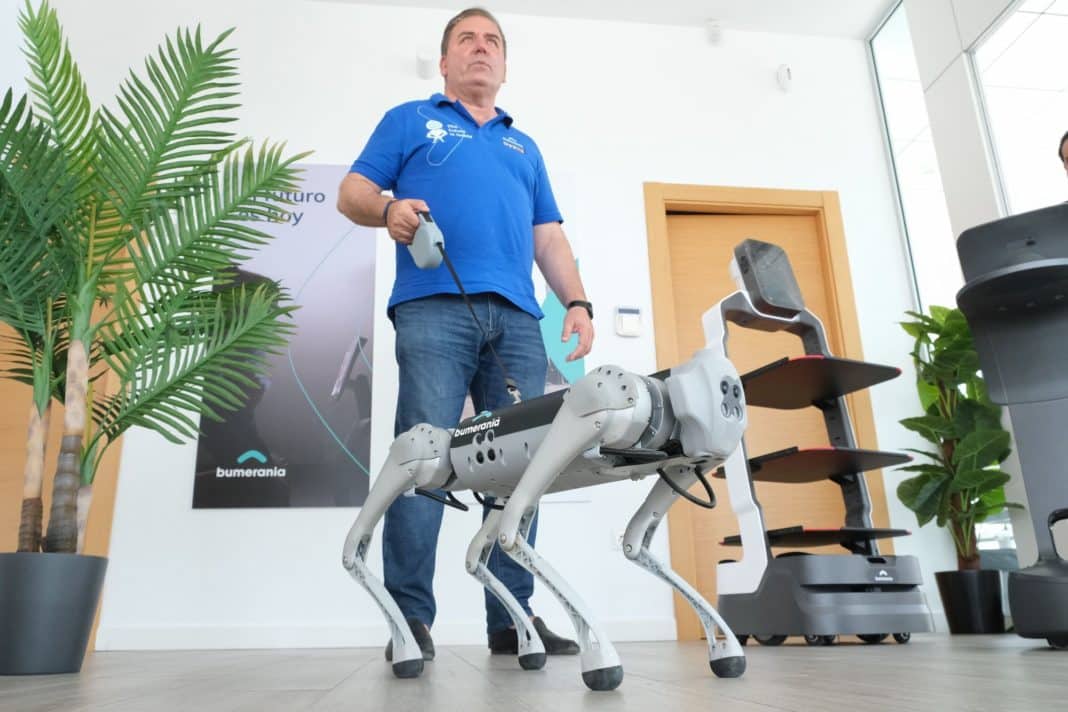It will walk up and greet you, and move happily around when it welcomes you, like any well-trained dog, but this one has no hair. It is a robot designed to be used for military missions, although it is not too far away in being put to use as a guide dog for blind people.
Software and artificial intelligence can be changed so that the dog can be adapted to whatever mission it is put to.
The robot dog has been designed by a company located in the Elche Business Park, and it already has orders from many different armies and also from companies wishing to monitor their facilities. The guide dog will have to wait, though, before it can be used by a blind person, as it has not yet been put on the market, but the company Bumerania, and its CEO, Isidro Fernández, tells us that they are finalising their technology and have already carried out the pertinent tests, with a view to putting it into production in two months.
The robot dog has 14 built-in cameras and is capable of climbing stairs. As for the guide dog project, it is being developed in partnership with the University of Alicante (UA). They have now developed a system so that the cameras are able to read the visual signals of traffic lights identifying if they are red, amber or green.
It also identifies pedestrian crossings and other road signs, as well as a car approaching at high speed. “A blind person can indicate an address and the robot dog will take you to the site safely,” explains Fernández. It even incorporates a leash as if it were a real dog.

As for the military version of the robotic dog, it is larger and is even capable of submerging under water, which makes it very useful for army missions. This military robot dog can carry up to 80 kilos and even carry a person. Many armies are already showing interest in this marvel of technology, and in Indonesia the company has already sold 124 units, at a cost of 60,000 euros each.
The Spanish army has also shown an interest and has asked the research department to incorporate a chemical weapons sensor into the robot dogs. It can also be connected to a military drone so that both are able to maintain communication and, if the dog detects something unusual, it notifies the drone, which can be several kilometres away, and which can then scan the situation.
They are also programmed to act as riot police, launching pepper spray balls, although the CEO of Bumerania points out that they are not prepared to fit weapons to the dogs.
The Spanish army has also commissioned robots capable of evaluating the emotional state of its soldiers. It all sounds like science fiction, but it’s already becoming very real.





